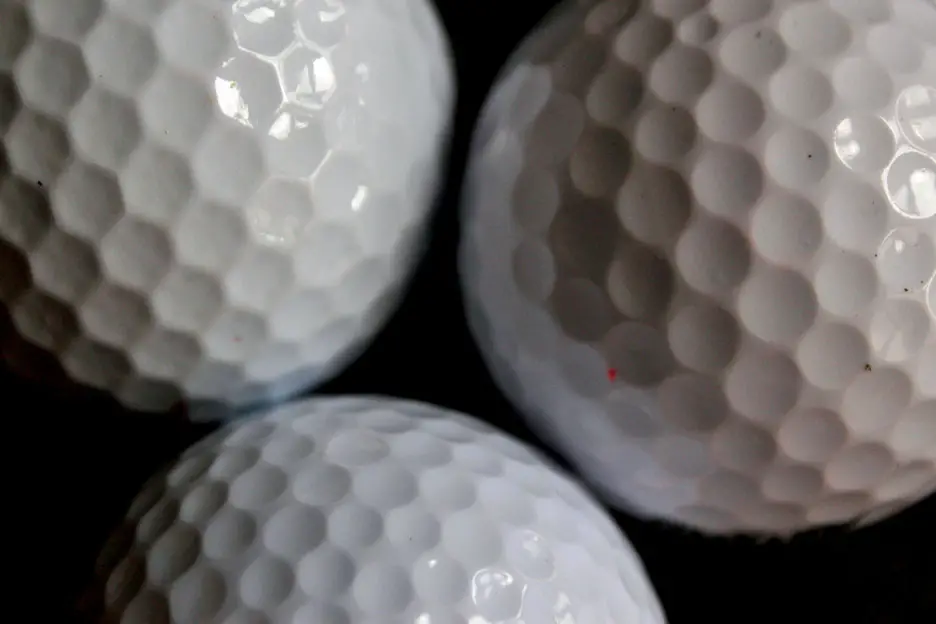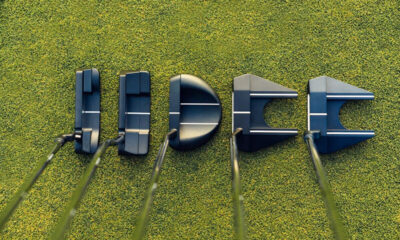-
-
by
Mark Perry
Key Points
- Different Rules for Pros and Amateurs: Bifurcation in golf suggests implementing separate equipment rules for professionals and amateurs, addressing the gap in performance capabilities due to technological advancements.
- Historical Debate and Governing Bodies’ Stance: This concept has been debated for years, with the R&A and USGA playing pivotal roles. Although they haven’t officially endorsed bifurcation, recent equipment regulations suggest a shift towards different rules for different play levels.
- Implications and Future of Golf: Recent developments indicate a gradual move towards bifurcation, sparking discussions about preserving the integrity of professional golf while enhancing the amateur experience, and how this could shape the future identity of the sport.
Golf, a game cherished for its traditions and consistency, is currently at the heart of a significant debate that could reshape its future. This debate centers around a concept known as “bifurcation.” In the simplest terms, bifurcation in golf refers to the idea of creating two sets of rules: one for professional players and another for amateurs. This concept is not new but has gained traction in recent times due to evolving technology and changing dynamics within the sport.
While the term “bifurcation” might sound unfamiliar to those outside the golfing community, within its circles, it’s a subject of extensive discussion and varied opinions. The dictionary definition of bifurcation is ‘the division of something into two branches or parts.’ In the context of golf, it suggests a potential split in the game’s equipment regulations, fundamentally altering how professionals and amateurs play the game.

The Essence of Bifurcation in Golf
The core idea behind bifurcation in golf is straightforward yet profound. It proposes different equipment rules for two categories of players: professionals, who compete at the highest levels of the sport, and amateurs, who play the game for recreation and love of the sport. The driving force behind this proposal is to address concerns about the increasing distance and performance capabilities of modern golf equipment, particularly as it pertains to the world’s top players.
At the heart of this discussion is the golf ball itself. With advancements in technology, golf balls have become more efficient, enabling players to hit farther and with greater accuracy. While this is a boon for amateur golfers, helping them enjoy the game more fully, it poses a challenge at the professional level. The concern is that these technological advancements might overshadow the skill and talent required at the professional level, potentially unbalancing the game.
For professional players, the idea of bifurcation means using equipment that limits their distance, primarily through restrictions on the golf ball. This limitation is thought to preserve the challenge and skill level required at the professional tier. In contrast, amateurs would continue using the current, technologically advanced equipment, enjoying the benefits these bring to their game. This differentiation aims to maintain the integrity of professional golf while ensuring the game remains enjoyable and accessible to the wider golfing community.
The proposal of bifurcation is not without controversy. Detractors argue that such a split could create confusion and diminish the unified spirit of the game. Golf is unique in that amateurs can play the same courses with the same equipment as professionals, fostering a sense of connection and continuity between all levels of play. Bifurcation could potentially disrupt this link, creating a perceptual and practical divide between the amateur and professional worlds.

Despite these concerns, the conversation around bifurcation is gaining momentum. It’s a response to the evolving nature of the sport, where technological advancements are continuously altering how the game is played. This discussion is not just about equipment; it’s about preserving the essence of golf, balancing tradition with progress, and ensuring the game remains fair and challenging for all who play it.
In the next section, we will delve into the historical context of this debate and explore how it has evolved over time, shaping the current discourse around bifurcation in golf.
Historical Context and Current Debate
The concept of bifurcation in golf is not a new one. It has been a subject of debate for many years, with its roots tracing back to earlier periods in the sport’s history when technological advancements began to significantly influence play. Over the years, as golf equipment has evolved – from the types of clubs used to the composition of golf balls – the question of bifurcation has periodically surfaced, prompting discussions about maintaining the balance between tradition and modernization in the sport.
Central to this debate are the governing bodies of golf, notably the Royal & Ancient (R&A) and the United States Golf Association (USGA). These organizations are responsible for setting the rules of golf worldwide. Interestingly, while these bodies have addressed issues related to equipment and playing standards, they have not explicitly endorsed the idea of bifurcation. Instead, they have often opted for rule changes that apply universally to all players. However, their recent actions, particularly concerning equipment regulations, hint at a potential shift towards accommodating the differing needs of professional and amateur players.
Potential Impacts of Bifurcation
The potential impacts of bifurcation in golf are wide-ranging and multifaceted. On the one hand, creating separate rules for professionals and amateurs could help preserve the traditional challenges of the game at the elite level. By limiting certain aspects of equipment for professionals, such as the distance a golf ball can travel, the skill and strategy inherent in the sport are maintained. This could ensure that professional golf remains a true test of ability, rather than an exhibition of technological prowess.
For amateurs, continuing to use advanced equipment could enhance their enjoyment and engagement with the game. This level of the sport could become more accessible and enjoyable for the casual player, who may not have the skill or time to play at a professional level but still loves the game.
However, the bifurcation could also introduce significant complexities. One major concern is the potential confusion it might create. Golf is renowned for its universal appeal – the idea that anyone can play on the same courses with the same equipment as the world’s best. Bifurcation could erode this unique aspect of golf, creating a perceptual divide between the amateur and professional games.
Moreover, for players transitioning from amateur to professional status, bifurcation could present practical challenges. Adjusting to different equipment rules could be a significant hurdle, potentially impacting the development and progression of emerging talent.
Another critical aspect to consider is the link between professional and recreational golf. Many amateurs are inspired by professional players and aspire to emulate their play, including the use of similar equipment. Bifurcation could disrupt this connection, possibly affecting the aspirational and inspirational elements that drive amateur engagement with the sport.
Recent Developments and Rules
In recent years, there have been notable developments that suggest a gradual move towards bifurcation in golf. A significant example is the decision by golf’s governing bodies, the R&A and USGA, to implement a local rule allowing professional and elite amateur tournament organizers to restrict club shaft lengths to a maximum of 46 inches. This rule, which came into effect from January 1, 2022, is part of a broader strategy to address the issue of increasing hitting distances, especially in professional golf.
This move indicates a willingness by the governing bodies to consider different rules for different levels of play, essentially a step towards bifurcation. It reflects their concern about the impact of technological advancements on the game, particularly the fear that longer drives could compromise the traditional challenges of golf courses designed decades ago.
These developments have sparked discussions across the golfing world. While some see this as a necessary step to preserve the integrity and challenge of professional golf, others worry about the implications for the sport’s unity and tradition. The debate extends beyond equipment to broader questions about the future of golf and how it can adapt to changing times while maintaining its core values.
The Debate Continues
As the conversation about bifurcation in golf continues, it becomes clear that there are no easy answers. Proponents of bifurcation argue that it’s essential for maintaining the skill and strategy that define professional golf. They believe that without such differentiation, the sport risks becoming overly dominated by power and equipment technology, diminishing the importance of finesse and tactical play.
Opponents, however, caution against the potential fragmentation of the sport. They argue that one of golf’s greatest appeals is its universality – the fact that everyone plays by the same rules, whether they are weekend amateurs or top professionals. They fear that bifurcation could create an ‘us versus them’ mentality, weakening the shared experience that unites the golfing community.
Amidst these viewpoints, the future of bifurcation in golf remains uncertain. What is clear, however, is that the discussion reflects a sport at a crossroads, grappling with how best to evolve in a rapidly changing world. The challenge for golf’s governing bodies, players, and fans alike is to find a path that respects the game’s traditions while embracing innovations that can enhance its appeal and accessibility.
Bifurcation in golf is more than a technical debate about equipment rules; it’s a conversation about the identity and future of the sport. As golf continues to evolve, the decisions made today will shape its trajectory for years to come. Whether bifurcation becomes a reality or remains a theoretical concept, its discussion is crucial for understanding and addressing the challenges facing modern golf.
In a sport as rich and storied as golf, change is always approached with a blend of caution and contemplation. The ongoing debate about bifurcation is no different, representing a critical moment in the sport’s history. As golfers and enthusiasts, our role is not just to observe but to engage in these conversations, contributing to the shaping of a sport we deeply love and respect.
Mark Perry: Editor-in-Chief of Golf News Nation Mark Perry, with 15 years in sports journalism, is the latest addition to Golf News Nation, bringing deep experience despite only starting golf in 2021. His fresh love for the game complements his expertise in sports analysis, offering a novel perspective to golf journalism. Even as a new golfer, Mark's dedication to providing insightful, factual, and engaging content is unwavering. He adeptly blends respect for golf's traditions with an understanding of its evolving aspects. At Golf News Nation, he's become instrumental in nurturing a community for golfers of all levels. Mark's passion for the sport and commitment to its community enriches his writing, ensuring a broad appeal to all golf enthusiasts. EMAIL: mark.perry@golfnewsnation.com Quote from Mark Perry "Despite my recent introduction to golf, my years in sports journalism allow me to blend a fresh enthusiasm with deep analytical insight, enriching the golfing narrative for enthusiasts at every level." ""










